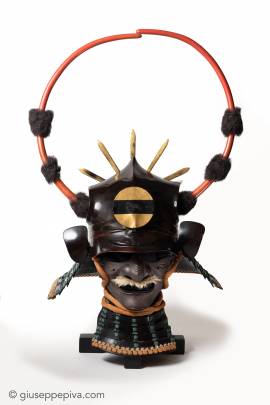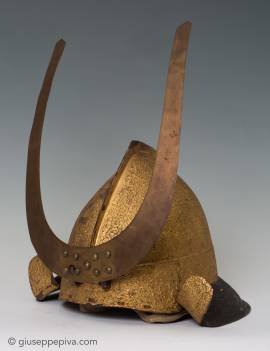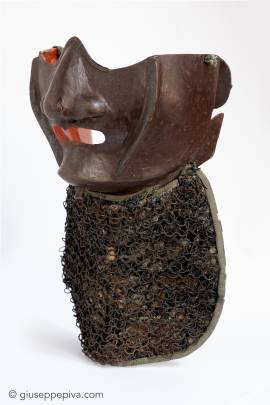Samurai helmet in the shape of a soft cloth capEdo Period, 18th centuryBibliografia: G. Piva, Le armature dei Samurai: Luni Editrice, 2020, pag. 60Kawari kabuto are helmets with unusual designs that were popular during the Momoyama and Edo periods. A number of them drew inspiration from traditional Japanese and Chinese headgear and caps. This kabuto belongs to this group and takes the name after the tōzukin, a kerchief worn in cold weather that covers the entire head, excluding the eyes. The helmet is in fact shaped to resemble a cloth tied around the head and fastened in the...
WORKS FOR SALE
DATEMomoyama period (1575 - 1615), late 16th centuryMEDIUMGilded iron A gold lacquer helmet of momonari shape. The single-plate shikoro is black lacquered and the original maedate is gilt. The momonari shape (peach-shaped) is inspired by European helmets, specifically designed to deflect the firearms’ bullets.This kind of helmet is well known: they had been made for the campaign of Korea (1592-98) in Kyushu island. The peculiarities of these helmets were that they did not belong to a single soldier but they were...
A samurai mask of ryūbu style hammered out of a single sheet of ironEdo period, 17th century Ryōei is considered a legendary armor maker and his name is closely associated to the uchidashi (hammering) technique. His real name was Ohara and he lived near Edo (Tokyo) in the late 17th century. Ryōei had a remarkable instinct for iron and was able to forge helmets, masks and cuirasses by hammering a single metal foil into the desired shape. If not for his disciple Kunitaka, who learned the technique but was unable to capture his teacher's "spirit," his talent would have...
Copyright © 2016 - giuseppe piva - VAT: 05104180962










